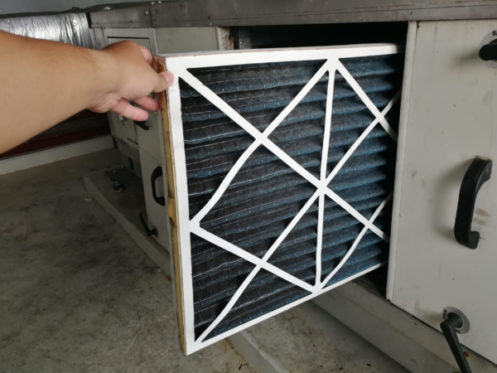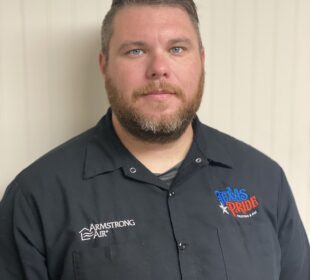Air filters are a huge part of an HVAC system. They’re what helps keep the air in your home feeling fresh, as well as safe. They separate harmful pollutants from the air you breathe, and they prevent particulates from damaging the system overall. Without them, we’d be sick, and our HVAC systems would break down.
Because an air filter holds so many things that are a health risk, as well as a mess, it’s important to dispose of them properly. Thankfully, there’s an entire process that can be followed to ensure these harmful elements aren’t reintroduced into the air. Keep reading to learn about that process!
Before Starting, Turn Your HVAC System Off
Your system should never be run without a filter. Filters stop dust from clogging your HVAC system, and they stop pollutants from being spread throughout your home. Always turn the system off before starting a filter replacement.
Step 1: Gather Your Materials
When you’re replacing an air filter, you should have a few things ready. First, grab a plastic bag that’s appropriately sized. In most cases, a trash bag works. You’ll also need tape and a replacement air filter. If you’re particularly sensitive to airborne allergens and dust, grab a face mask and a set of gloves.
Step 2: Remove the Filter and Bag it
When you remove your filter, you want to transfer it to the plastic bag you’ve got immediately. Air filters are full of debris that is harmful. Even more than that, though, this debris is messy. In most cases, it can fall off the filter if jostled, making a mess, and presenting a health hazard to you and your system.
Step 3: Seal the Bag and Relocate it
Once the dirty filter has been bagged, it should be sealed. This is what your tape is for. Try to tape the bag shut in a way that prevents any airflow. Then, take the bag to an outdoor trash can. This helps to prevent any accidents from happening.
Step 4: Clean the Grate/Vent
Air passes through a grate, or a vent, through the air filter, and into the system. In most cases, these vents collect dust and debris over time. To improve the life of the filter you’re about to install, clean the vent. This reduces the number of debris being put into the new filter upon installation.
Step 5: Replace the Filter, Turn the System Back on
Install the new air filter for your system, ensuring that the airflow is correct. Many filters have arrows, indicating whether they’re directional. Once installed, the system can be turned back on.
HVAC Cleaning is Still a Must
While these filters are excellent at what they do, your HVAC system should still be maintained. This includes cleaning by professionals, normally on an annual basis. If you’re looking to have your HVAC system maintained, we’re here to help! Texas Pride Heating & Air offers many maintenance services and plans to fit your needs. Reach out to set something up today.








